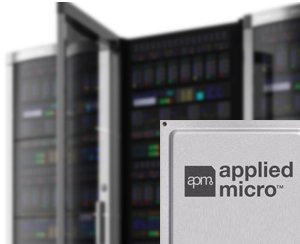Applied Micro leads the charge to infiltrate the $12 billion server processor market with ARM-based ICs.
This is not a trivial task. The $54 billion gorilla standing in Applied Micro’s way is Intel with a 90% plus share of the server processor market.
So what, if any, are Applied Micro’s selling points compared to Intel’s?
First and foremost there’s the business model.
“Competition is what we’re bringing,” says Gaurav Singh, vp of technical strategy at Applied Micro, “in most other markets there is very healthy competition with multiple silicon customers.”
The ARM model allows for multiple silicon vendors to compete against Intel’s proprietary architecture, sole-sourced chips. In addition to Applied Micro, there are AMD, Broadcom and Cavium which are trying to get ARM-based server chips to market. Samsung and Qualcomm may also dive in. Opening up the server processor market to competition should rid the market of $1,000 ICs.
Server manufacturers, and end-users who design their own servers, know that, currently, Intel has a lock on the server processor market and can name its prices.
So how does Applied Micro’s processor, called X-Gene 1 currently in production at TSMC, stack up against Intel’s server chips?
“Intel’s Xeon (its top end server chip) dissipates 100W and costs $1000 whereas X-Gene 1 dissipates 30-40W, delivers 80-90% of the computer performance of Xeon and sells in the hundreds of dollars,” replies Singh.
Singh is reluctant to be more precise about the expected price level for X-Gene 1.
“People are looking for an alternative to Intel because their margins are very high – 80% + on Xeon – and Intel has been inflexible in its product offerings,” said Singh.
In what respect inflexible? “For instance in-memory computing has become very important – people want to store processed data in DRAM rather than disc,” responds Singh.
This means that a server processor has to be capable of accessing large amounts of DRAM. Intel’s Xeon chips can access enough DRAM for in-memory computing but Intel’s cheaper Atom-based server chips can’t.
“With Intel, if customers want sufficient memory for in-memory computing they have to go to Xeon,” says Singh.
So what’s stopping Intel putting enough memory interfaces on its Atom-based server chips to provide sufficient access to DRAM for in-memory computing?
“If Intel allows Atom to have as much memory as Xeon then they lose the margins of Xeon,” replies Singh.
By contrast, X-Gene was designed to have high memory density with four channels of DDR memory .
For more detail: Applied Micro’s X-Gene challenges for server processor market

